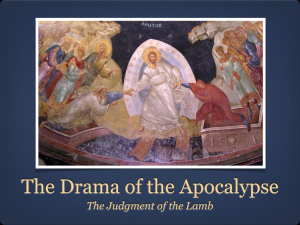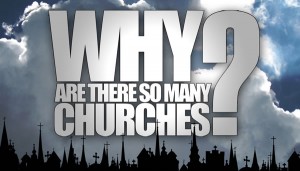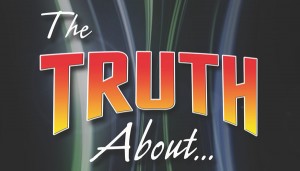Revelation is one of my favorite books of the Bible, not because of the controversies that surround it, but because of its splendid display of God’s cosmic work of creation, redemption and consummation. So when the opportunity arose to teach the book, I seized it! But as a good friend of mine once wrote, teachers are students that share, and that’s exactly what I plan on doing. So, Lord willing, as I teach through the book over the next few months, I’ll post a summary of each of the eight major sections of the book (see the link below for the handout), along with links to (1) the full audio recordings of the classes and (2) a PDF of the slide deck we used in class (plus some additional background slides not used). And hopefully, you’ll be following along with us!
The book was recorded by the apostle John in AD 95–96 during his exile on the island of Patmos, off the coast of modern-day Turkey. Some scholars have doubted, though, whether the John mentioned in Revelation is the apostle, or another man by the same name—usually referred to as John the Elder. But with the exception of three early Christian writers and most skeptical scholars of the last century or so, the vast majority of Christian teachers throughout history believe the book to be written by the Beloved Disciple himself. As the Venerable Bede points out, “History notes that John had been banished to this island by the emperor Domitian on account of the gospel, and that . . . he was . . . allowed to penetrate the secrets of heaven while prohibited from leaving a small space of the earth” (Explanation of the Apocalypse 1.9, ACCS).
John identifies his work as both an apokalypsis and a prophecy (1:1-3). But the Greek apokalypsis doesn’t mean “the end of the world;” it means “revelation, disclosure, unveiling.” Most Jewish apocalyptic works were written during periods of foreign occupation, so they were written to conceal the message from the outsider while revealing it to the chosen people. John therefore uses this literary form to stress the cosmic importance of an unswerving faith in the Lamb of God against the godless powers of corrupt religion, corrupt government, and corrupt riches—in both the first century and now.
Most of Revelation therefore consists of a series of dramatic visions symbolizing judgment, which parallel the structure of Greek drama—prologue, episodes, scenes, choruses, and an exodus. The sequence and meaning of these visions have been the cause of much confusion in the Christian world, but as Grant Osborne points out, God has already given us the key: “every symbol in the Book of Revelation was understood in John’s day and drawn from the stock of apocalyptic symbols stemming from the OT and intertestamental period as well as the situation in the first century” (240). Or as John himself points out, Christ revealed to him, “things that must soon take place . . . for the time is near” (1:1, 3 ESV).
Which brings us to the historical background of the book. Revelation is addressed to the troubled churches in the Roman province of Asia (1:4). For them, persecution was a daily part of their life, but was rarely sponsored by the Roman government, ranging from spontaneous mobs to economic discrimination. As Kevin Rhodes writes, “The persecution [recounted in the NT] was sporadic, generally arising from someone’s taking offense to the Christian message because he had something to lose if people converted. . . . While the Jews opposed Christianity for religious reasons, other opponents usually objected due to its economic impact on them personally” (148).
But soon the enemies of Christ would have their day in court. The Living God, the Risen Son, and the Spirit of Truth had spoken (1:5). Just as Christ had delivered his people from their bondage to sin and death, and fashioned them into a nation of royal priests, the Lord would again exercise his limitless power (1:5-6, 8). The irony of at all is that the judgment to come would be the judgment of the Lamb—the Lamb no longer slain, but living, victorious, redeeming and conquering: “Behold, he is coming with the clouds, and every eye will see him, even those who pierced him, and all the tribes of the earth will wail on account of him. Even so. Amen” (1:7).
There is, of course, much more to Revelation than what we’ve covered here (after all, it took me seven weeks to cover this material in class!), but hopefully this gives you a good place to start. Throughout, we must keep in mind the literary, historical, and theological context of John’s masterpiece, ever mindful that there is much we still do not know. As Osborne concludes, “God has revealed everything in symbols, and we can only do our best in interpreting the data in Scripture. He will reveal all in due time. Until then we must be humble and avoid turning eschatology into a new holy war between factions” (242).
And with our own speculations set aside, we can then focus on the central theme of the book: the Lamb of God. Then, as now, the church endures assaults from without and within but is assured of the final victory of Jesus Christ as “King of kings and Lord of lords” (19:16), bringing to ultimate fulfillment the reign of God in “a new heaven and a new earth” (11:15; 21:1). And for that reason, we can join our forefathers in prayer, that the Father “direct our steps that we may walk in holiness of heart and do what is good and well-pleasing in Thy sight and in the sight of our rulers. Yea, Lord, make Thy face to shine upon us for good in peace, that we may be shielded by Thy mighty hand and delivered from every sin by Thy uplifted arm, and deliver us from those who hate us wrongfully” (First Clement 60:2-3 ANF).
The following files are now available for free viewing and download:
Attachments
- Handout: Introduction & Outline
- The Drama of the Apocalypse (Intro & Rev 1:1-8)
Audio Recordings
- Week 1: Identifying the Writer (slides on Tolkien not posted due to copyright)
- Week 2: Literary Context
- Week 3: Historical Context, Part 1
- Week 4: Historical Context, Part 2
- Week 5: Historical Context, Part 3
- Week 6: Interpreting Revelation
- Week 7: Prologue (Rev 1:1-8)
Works Cited
- Ancient Christian Commentary on Scripture. Ed. Thomas C. Oden. InterVarsity, 2003. Accordance.
- The Ante-Nicene Fathers. Ed. Alexander Robertson & James Donaldson. Accordance.
- The ESV Study Bible. Ed. Lane T. Dennis & Wayne Grudem. Crossway, 2008. Accordance.
- Osborne, Grant. Evangelical Response to Stone-Campbell Eschatology. Evangelicalism & The Stone-Campbell Movement. Vol. 2. Ed. William R. Baker. ACU, 2006. 237-244. Print.
- Rhodes, Kevin W. A Consequence of Legitimacy: Domitian’s Conflict with the Senate and the Imperial Cult’s Conflict with Christianity. Xlibris, 2007. Print.
Cross-posted from In His Image.





